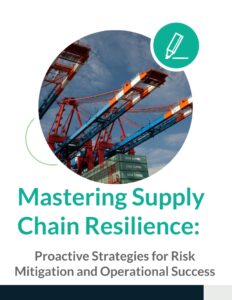Process mapping might initially seem like a technical term primarily associated with engineering or manufacturing but in reality, it serves as a powerful and versatile tool that can be harnessed by any business aiming to scale efficiently. Today, where efficiency and optimization are key determinants of success, having a clear understanding of how to map and streamline business processes can significantly enhance an organization’s operational effectiveness and overall performance.
Why Process Mapping Matters for Scaling Your Business
As your business begins to grow, managing operations can quickly become a complex undertaking. This complexity can lead to confusion, delays, and missed opportunities if not addressed properly. Process mapping provides a visual representation of your workflows, allowing you to break down each step and analyze the interactions between different tasks and teams. This clarity helps identify inefficiencies and bottlenecks, enabling you to streamline decision-making processes and enhance collaboration across departments.
Moreover, by documenting and visualizing your processes, you create a reference point that can be invaluable for onboarding new employees, aligning team objectives, and fostering a culture of continuous improvement. In essence, effective process mapping not only prepares your business for sustainable growth but also empowers your team with the insights needed to adapt and thrive in a rapidly changing market. By making process mapping an integral part of your business strategy, you position your organization to respond agilely to challenges and seize new opportunities as they arise.
What is Process Mapping?
Process mapping is the practice of creating flowcharts or diagrams to represent each step of a process within your business. These maps offer a clear and concise way to understand how tasks flow from one stage to another. More than just a visual aid, process maps facilitate better decision-making and reveal areas for improvement.
Benefits of Process Mapping
Identifying Inefficiencies
One of the most significant benefits of process mapping is its ability to pinpoint inefficiencies within an organization. By visualizing each step of the process, it becomes much easier to identify where bottlenecks occur, where resources are being wasted, and how processes can be optimized for better outcomes. This clarity allows teams to dissect workflows and understand the flow of tasks, which can lead to improved productivity and reduced costs.
Improving Decision-Making
Having a clear and detailed map of your processes allows for significantly better decision-making. Managers can gain insights into the bigger picture and make informed, data-driven decisions, knowing precisely how changes will impact various parts of the business. This transparency fosters a culture of accountability and aids in aligning team efforts with overall organizational goals, ultimately enhancing team collaboration and efficiency.
Preparing for Sustainable Growth
Process mapping isn’t just about solving current problems; it’s also a strategic tool for preparing your business for sustainable growth in the future. By streamlining processes now, you establish a strong foundation that enables your organization to scale efficiently down the line. This proactive approach ensures that as demands increase, your operational capabilities can adapt seamlessly, reducing the risk of overwhelm and maintaining high-quality output. With a well-mapped process, businesses can navigate transitions with confidence and agility, setting the stage for long-term success.
How to Create a Process Map
Step 1: Identify the Process to be Mapped
The first step in creating a process map is to identify which process you want to visualize. This could be anything from order fulfillment to customer service. Start with a process that is critical to your business operations.
Step 2: Gather Necessary Information
Collect all necessary information about the process. This includes understanding who is involved, what tools are used, and what the desired outcome is. Speak to employees who are part of the process to get a complete view.
Step 3: Draw the Process Map
Use flowchart symbols and arrows to map out each step of the process. Begin with the initial task and follow through to the final outcome. Be sure to include decision points where the process may take different paths.
Tools for Process Mapping
Microsoft Visio
Microsoft Visio is a powerful tool for creating detailed and professional process maps. It offers a range of templates and shapes tailored for process mapping.
Lucidchart
Lucidchart is another excellent tool, known for its user-friendly interface and collaborative features. It’s ideal for teams that need to work together on process mapping.
Draw.io
For those looking for a free option, Draw.io offers robust capabilities for creating process maps. It integrates well with Google Drive, making it a convenient choice for many businesses.
Real-World Examples of Process Mapping Success
Manufacturing Efficiency
A manufacturing company used process mapping to identify inefficiencies in their production line. By visualizing the process, they discovered that several steps were redundant. Streamlining these steps led to a 20% increase in production efficiency.
Enhanced Customer Service
A customer service department used process mapping to improve their response times. The map revealed that requests were getting delayed in the approval stage. By addressing this bottleneck, they were able to reduce response times by 30%.
Improved Onboarding
A tech startup used process mapping to refine its employee onboarding process. The map showed that new hires were often waiting on IT setup for several days. By pre-scheduling IT tasks, they shortened the onboarding process and improved new hire satisfaction.
Overcoming Operational Blind Spots
Identifying Blind Spots
Operational blind spots are often areas of the business that go unnoticed until they escalate into significant problems. These blind spots can stem from various sources, including outdated processes, lack of communication, or unrecognized market changes. Utilizing process mapping can be a powerful tool to visualize workflows and identify these hidden issues before they adversely affect your business. By laying out each step of a process, you can pinpoint inefficiencies and redundancies that may not be apparent at first glance.
Common Blind Spots During Growth
Many businesses encounter similar blind spots during periods of growth, which can hinder their progress. As a company expands, it may struggle with inefficient communication channels that slow down decision-making and disrupt collaboration among teams. Additionally, a lack of standardized procedures can lead to inconsistencies in service delivery, creating frustration for both employees and customers. Moreover, as customer demand increases, businesses may find it challenging to manage and fulfill these requests effectively, resulting in missed opportunities and negative customer experiences.
Addressing Blind Spots Proactively
Addressing these blind spots proactively is crucial for maintaining operational efficiency and fostering growth. This involves regular reviews and updates of process maps to ensure they accurately reflect current practices and challenges. It is also vital to encourage a culture of continuous improvement within the organization. By empowering employees to suggest changes and improvements, you create an environment where everyone feels invested in the company’s success. Regular training sessions and feedback loops can further enhance this culture, enabling teams to adapt quickly to new challenges and maintain a competitive edge in the market.
The Role of Technology in Process Mapping
Automation Tools
Automation tools are revolutionizing the way businesses approach process mapping by further enhancing its benefits. Tools like Zapier and Automate.io allow users to connect different applications and automate repetitive tasks with ease. By streamlining workflows, these tools not only save time but also minimize the risk of human error. This automation enables teams to focus on more critical activities that require creativity and strategic thinking, ultimately driving productivity and improving overall operational efficiency.
AI and Machine Learning
AI and machine learning are increasingly being integrated into process mapping tools, transforming the landscape of business operations. These advanced technologies can analyze vast amounts of data and provide deeper insights into processes, allowing businesses to identify inefficiencies and areas for improvement. Predictive analytics powered by AI can forecast potential issues before they arise, enabling proactive measures to be taken. By leveraging these cutting-edge capabilities, organizations can stay ahead of the competition and ensure that their processes are continuously optimized for success.
Building a Culture of Continuous Improvement
Employee Involvement
Involving employees in the process mapping is crucial for creating a more accurate representation of workflows and gaining greater buy-in for any proposed changes. Employees are often the ones who work directly with processes daily, so their insights can lead to valuable improvements. Encourage a culture where team members feel comfortable providing feedback and suggesting enhancements. Implementing regular brainstorming sessions or surveys can facilitate this involvement and generate innovative ideas that may not have been considered otherwise.
Regular Reviews
Regularly reviewing and updating process maps is essential to ensure they remain relevant, useful, and aligned with current operational goals. Setting a structured schedule for these reviews, at least once a quarter, allows teams to assess the effectiveness of existing processes and identify areas for improvement. During these reviews, consider incorporating performance metrics and employee feedback to prioritize which processes require immediate attention. This proactive approach helps in adapting to changes in the business environment and ensures continuous alignment with organizational objectives.
Celebrating Successes
Celebrating the successes that arise from process mapping is vital for fostering a positive environment and reinforcing the importance of continuous improvement. Recognize and highlight achievements such as improved efficiency, cost savings, or enhanced customer satisfaction through company-wide announcements or team meetings. Consider implementing a rewards program to acknowledge individuals or teams who contribute significantly to these successes. By celebrating these milestones, you not only motivate your workforce to strive for further improvements but also embed a culture that values progress and innovation within the organization.
Conclusion
Process mapping can be a strategic asset for businesses looking to scale. By identifying inefficiencies, improving decision-making, and preparing for sustainable growth, process mapping sets the stage for long-term success.
For decision-makers, the insights gained from process mapping can lead to smarter strategies and a more agile organization. If you’re ready to take your business to the next level, start by mapping out your key processes and see the difference it can make.
Ready to transform your business processes? Explore the comprehensive guides on our resources page or connect with one of our process mapping consultants today.







